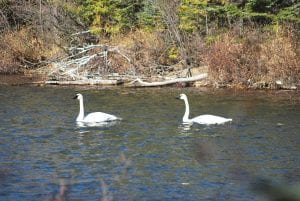TheMinnesota Department of Natural Resources (DNR) aims to put more ducks in the sky by training its sights on 1,800 shallow lakes.
That’s the essence of a new plan released by the DNR’s Section of Wildlife. The plan, called Managing Minnesota’s Shallow Lakes for Waterfowl and Wildlife, outlines five actions the agency intends to take to rebuild waterfowl populations.
“At its heart, this plan is about identifying our best opportunities and managing them aggressively,” said Dennis Simon, Section of Wildlife chief. “It also reflects an evolution in our thinking. The plan emphasizes maximizing the quality of shallow lakes on or adjacent to existing public lands and waters.”
Nicole Hansel-Welch, the DNR’s shallow lakes supervisor and primary author of the plan, echoed Simon’s sentiments. She said the state’s 4,000 shallow lakes (lakes larger than 50 acres and less than 16 feet deep) need to be assessed for their potential so that some can be managed in ways that benefit wildlife, hunters and others.
“As an agency, we have a history of actively managing our wildlife management areas, prairies and forests by shearing, prescribed burning, harvesting timber and implementing other activities,” she said. “We have also restored many wetlands on these lands, but believe we can do much more with our shallow aquatic systems. This first-ever shallow lakes plan addresses that need as part of our long-range duck recovery plan.”
The plan targets 1,800 basins with adjacent public land. Its five primary objectives are to: . Assess the habitat quality of Minnesota’s shallow lakes so conservation and protection efforts can be prioritized.
. Maximize waterfowl habitat efforts on 154 shallow lakes located completely within DNR or federal government ownerships.
. Maximize waterfowl habitat on some 1,700 shallow lakes that abut federal, state or county ownership.
. Increase wildlife management on 244 shallow lakes with public access, especially those already designated as Migratory Waterfowl Feeding and Resting Areas.
. Increase awareness and protection of lakes that contain natural stands of wild rice, an important waterfowl food.
“Though our plan is 50 pages long, it can be summed up in a single sentence,” said Hansel-Welch. “We want to maximize wildlife and public benefits on the basins with the highest potential.” This approach, she said, builds on recent successful water management projects at Buffalo Lake in Waseca County, Round Lake in Murray County and Lake Maria in Murray County.



Loading Comments